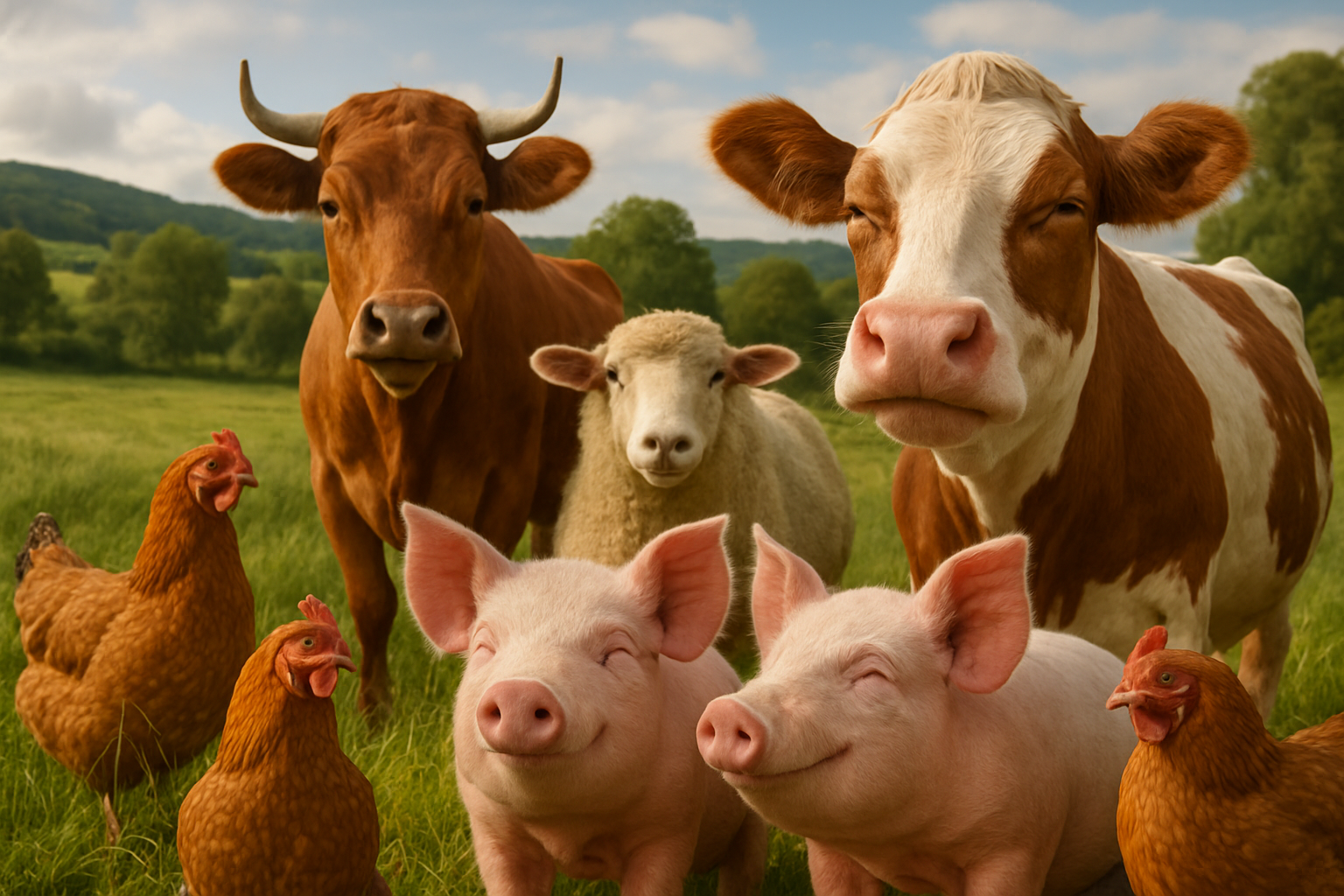
Extreme Confinement
Battery Cages for Egg-Laying Hens
- Hens are confined to cages smaller than a sheet of paper (67 square inches per bird)
- Unable to spread wings, nest, perch, or engage in natural behaviors
- Causes severe physical and psychological distress
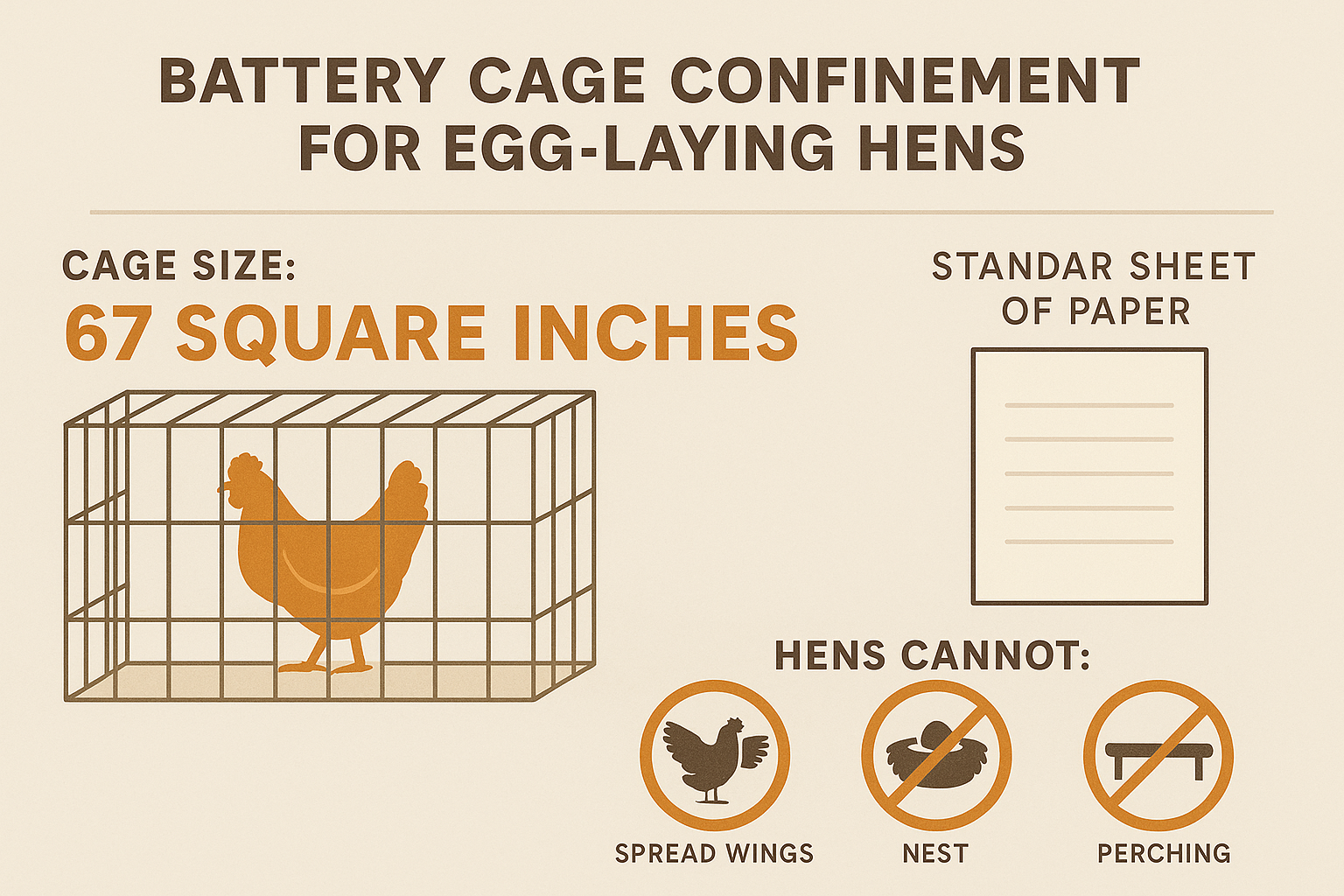
Reference: Lay, D.C. et al. (2011). "Hen welfare in different housing systems." Poultry Science, 90(1), 278-294. DOI: 10.3382/ps.2010-00962
Gestation Crates for Pregnant Pigs
- Sows confined in metal crates barely larger than their bodies for 3-4 months during pregnancy
- Cannot turn around or lie down comfortably
- Leads to muscle atrophy, joint problems, and stereotypic behaviors
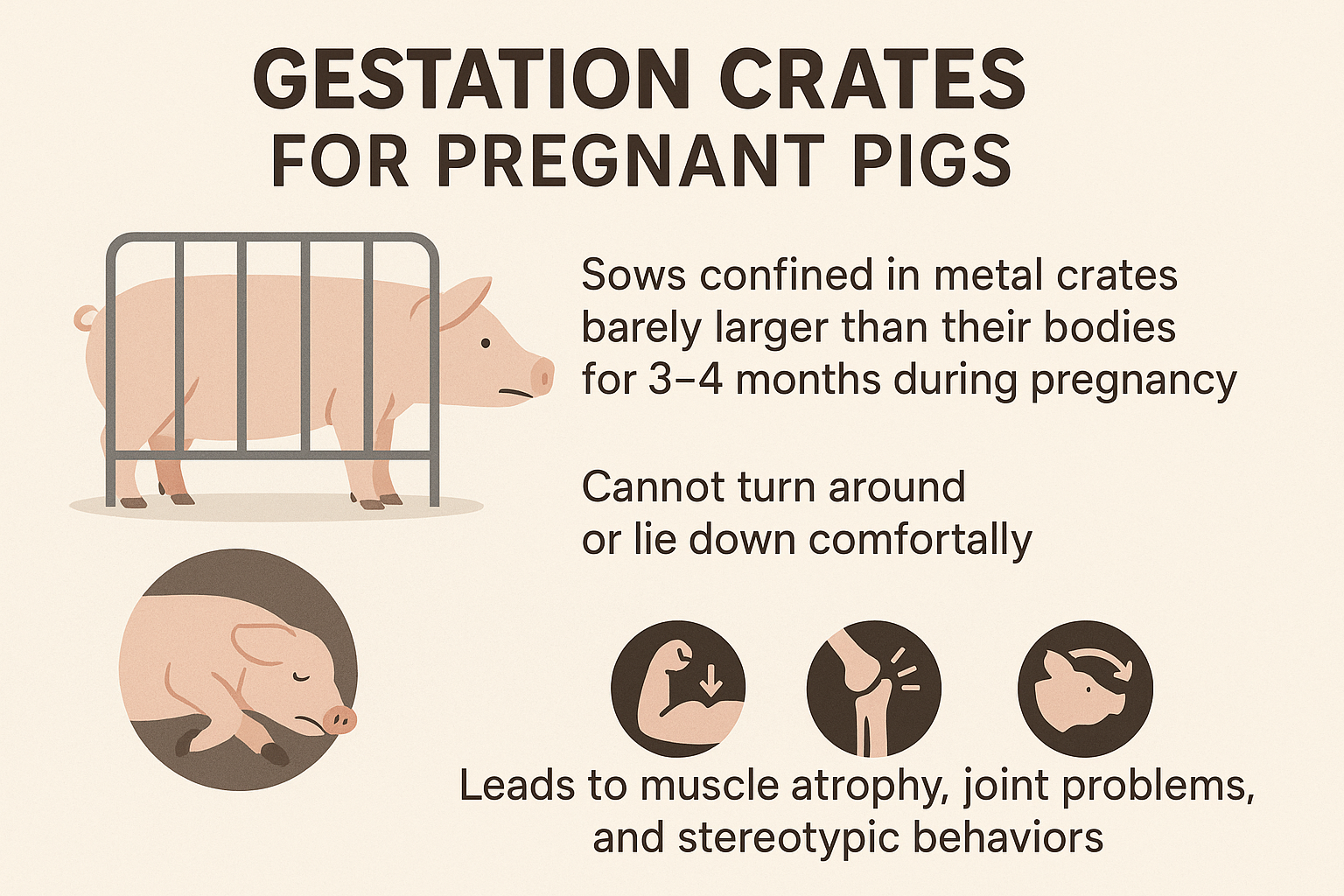
Reference: Marchant-Forde, J.N. (2009). "Welfare of dry sows in different housing systems." In The Welfare of Pigs (pp. 149-189). Springer. DOI: 10.1007/978-1-4020-8909-1_5
Severe Overcrowding
Impact on Animals:
- Broiler chickens: Up to 20,000-30,000 birds in a single shed with less than 1 square foot per bird
- Increased aggression: Pecking, cannibalism, and fighting due to stress
- Disease transmission: Rapid spread of infections in crowded conditions
- Ammonia buildup: Respiratory problems and eye damage from waste accumulation
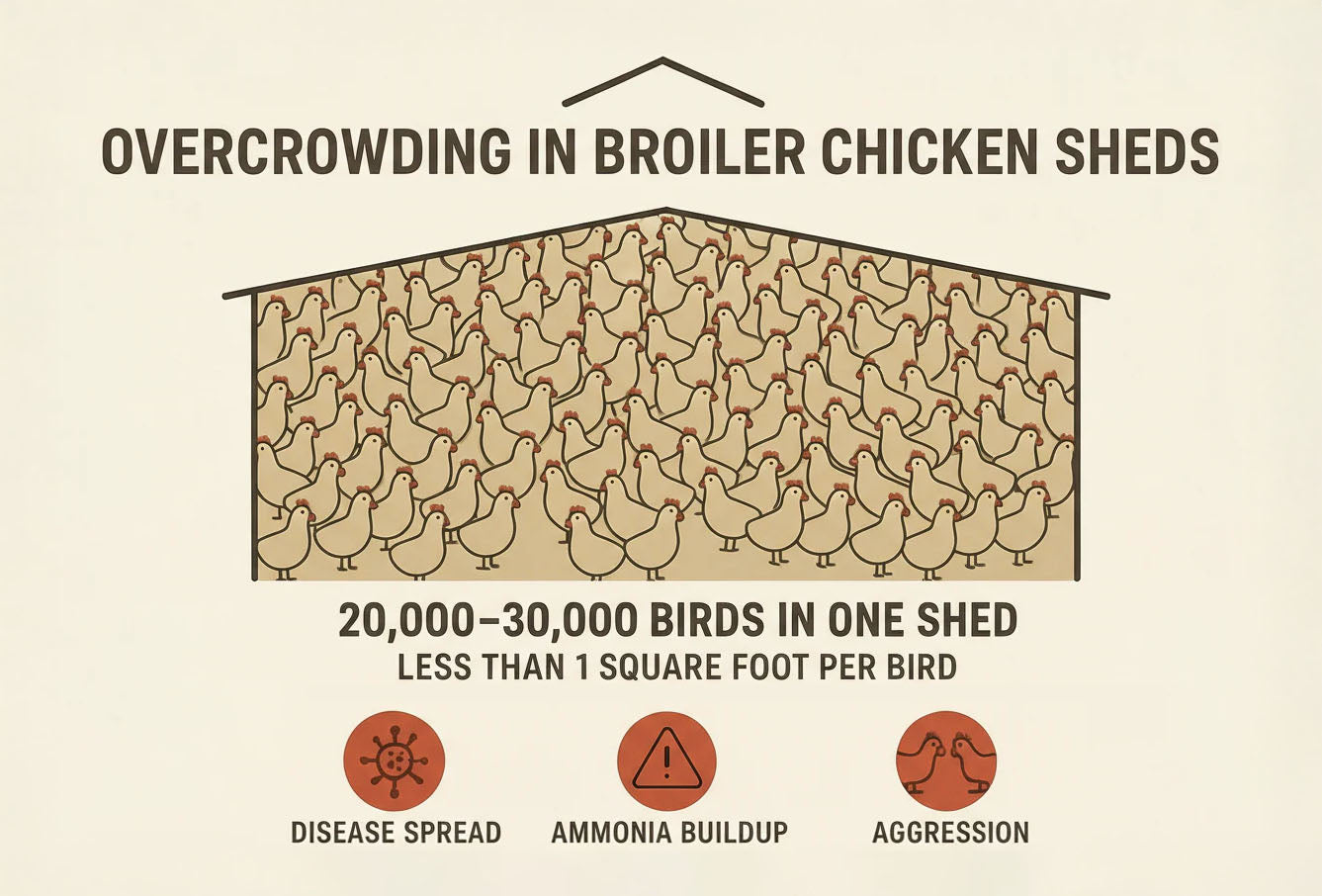
Reference: Estevez, I. (2007). "Density allowances for broilers: Where to set the limits?" Poultry Science, 86(6), 1265-1272. DOI: 10.1093/ps/86.6.1265
Painful Physical Alterations Without Anesthesia
Common Procedures:
- Debeaking (chickens): Partial amputation of the beak using hot blades, causing acute and chronic pain
- Tail docking (pigs & cattle): Removal of tails without pain relief to prevent injury from stress-induced biting
- Castration (pigs & cattle): Performed without anesthesia in most operations
- Dehorning (cattle): Removal or prevention of horn growth, often without pain management
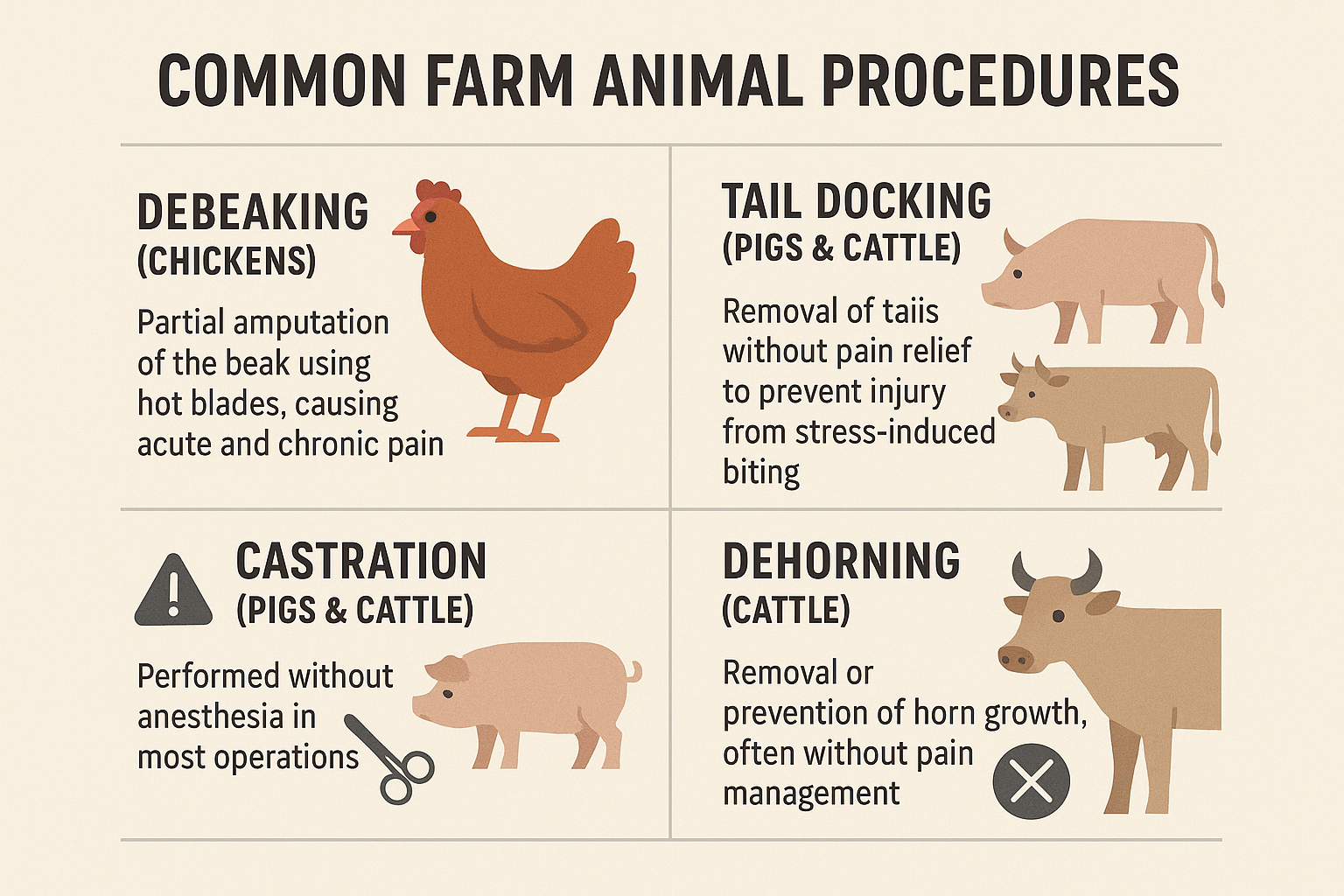
Reference 1: Reference: Stafford, K.J. & Mellor, D.J. (2011). "Addressing the pain associated with disbudding and dehorning in cattle." Applied Animal Behaviour Science, 135(3), 226-231. DOI: 10.1016/j.applanim.2011.10.018. 2: Prunier, A. et al. (2006). "European perspectives on castration of piglets." Animal Welfare, 15(4), 365-374.
Accelerated Growth & Genetic Manipulation
Broiler Chickens:
- Bred to reach slaughter weight in just 6-7 weeks (compared to 16 weeks naturally)
- Growth rate increased by 400% over the past 50 years
- Results in leg deformities, heart failure, and inability to support their own body weight
- Many birds cannot walk to food and water
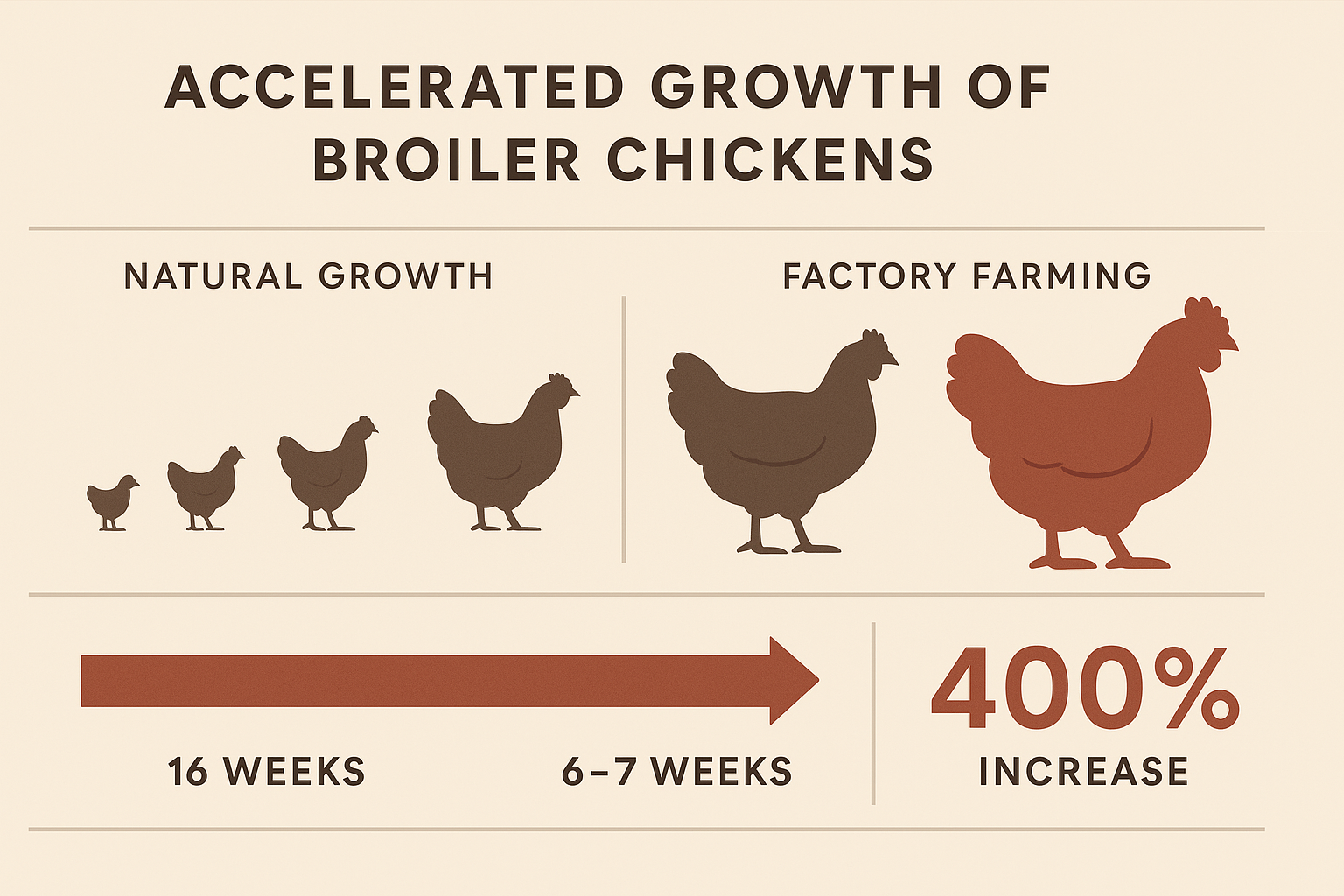
Reference 1: Knowles, T.G. et al. (2008). "Leg disorders in broiler chickens: prevalence, risk factors and prevention." PLoS ONE, 3(2), e1545. DOI: 10.1371/journal.pone.0001545
Dairy Cows:
- Selectively bred to produce 10x more milk than natural
- Leads to mastitis (painful udder infections), lameness, and metabolic disorders
- Average lifespan reduced from 20 years to 4-5 years
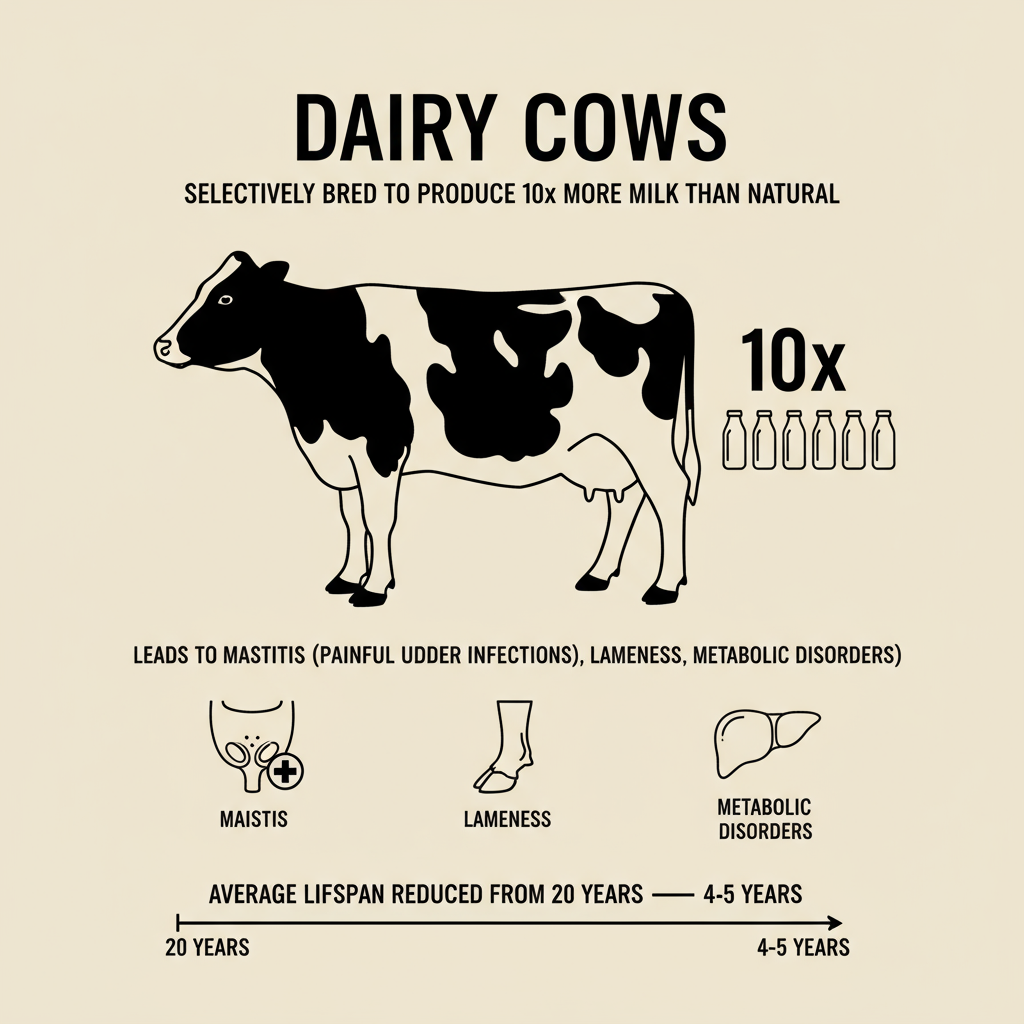
Reference 1: Oltenacu, P.A. & Broom, D.M. (2010). "The impact of genetic selection for increased milk yield on the welfare of dairy cows." Animal Welfare, 19(S1), 39-49.
Maternal Separation
Dairy Industry:
- Calves separated from mothers within 24 hours of birth
- Both mother and calf show signs of distress for days
- Cows have been documented calling for their calves for weeks
- Disrupts natural bonding and causes psychological trauma
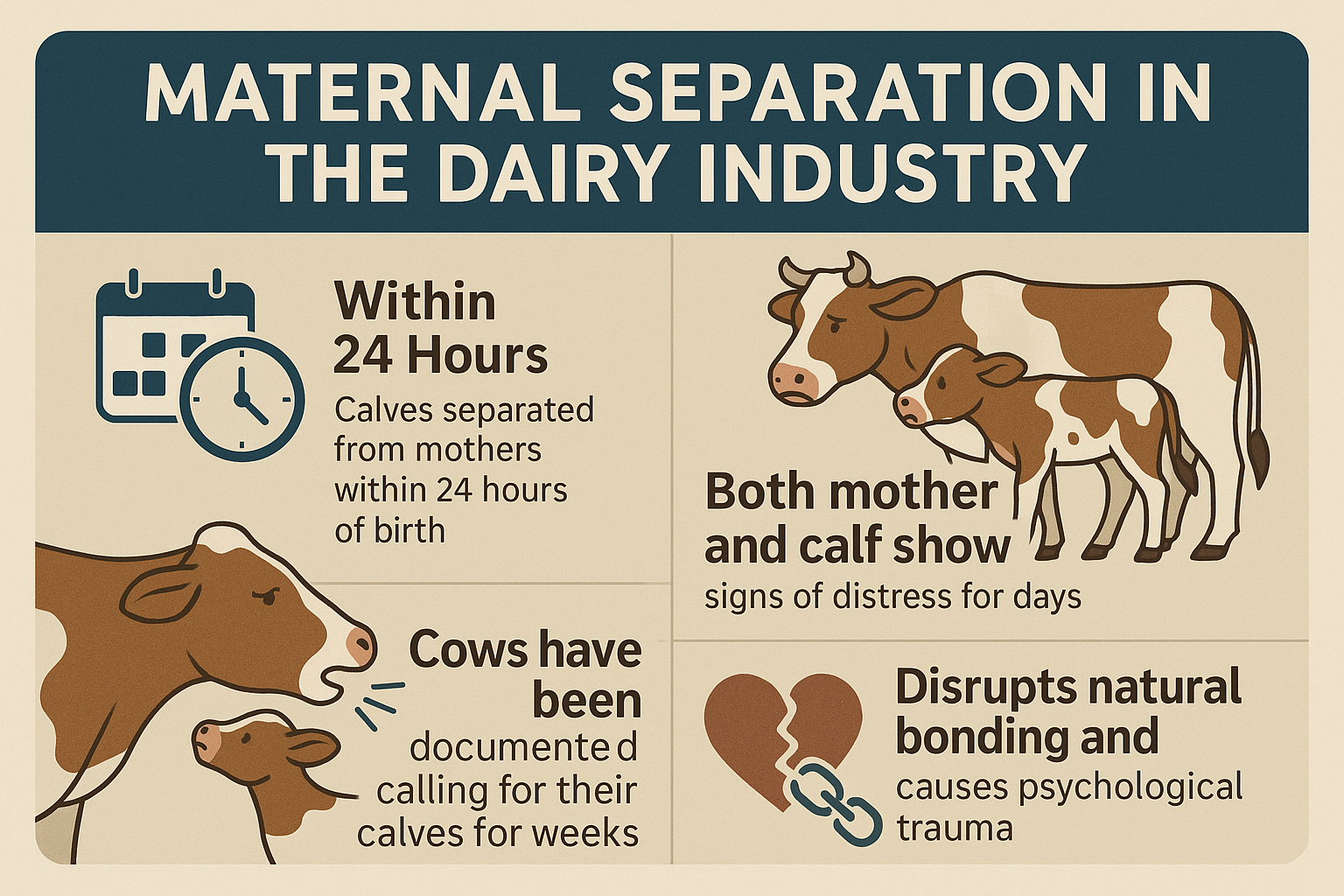
Reference 1: Weary, D.M. & Chua, B. (2000). "The importance of cow-calf contact in the dairy cow." Journal of Dairy Science, 83(7), 1521-1528. DOI: 10.3168/jds.S0022-0302(00)75024-4
Transport & Slaughter Stress
Transportation:
- Animals transported for hours or days without food, water, or rest
- Extreme temperatures (heat stress in summer, hypothermia in winter)
- Injuries from overcrowding and rough handling
Reference 1: Grandin, T. (2001). "Perspectives on transportation issues: The importance of having physically fit cattle and pigs." Journal of Animal Science, 79(E-Suppl), E201-E207.
Slaughter:
- Stunning failures result in animals being conscious during slaughter
- High-speed processing increases likelihood of improper stunning
- Fear and stress from unfamiliar environments and handling
Reference 1: Gregory, N.G. (2008). "Animal welfare at markets and during transport and slaughter." Meat Science, 80(1), 2-11. DOI: 10.1016/j.meatsci.2008.05.019
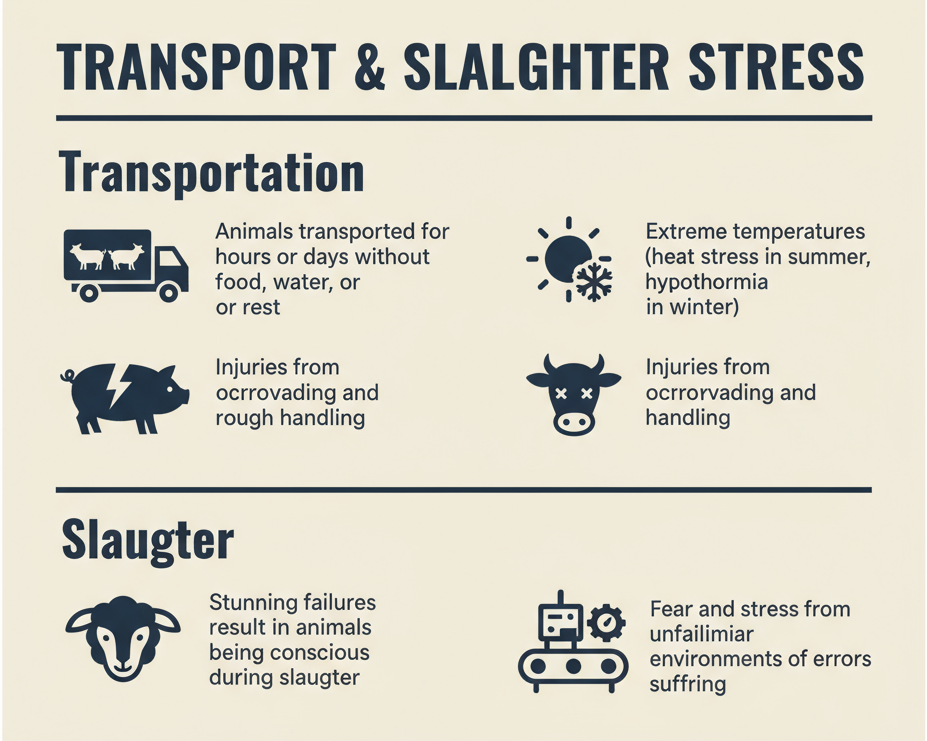
The Scale of the Problem
Global Statistics:
- Over 70 billion land animals raised and slaughtered annually worldwide
- 99% of farmed animals in the U.S. live on factory farms
- Most spend their entire lives indoors without access to sunlight or fresh air
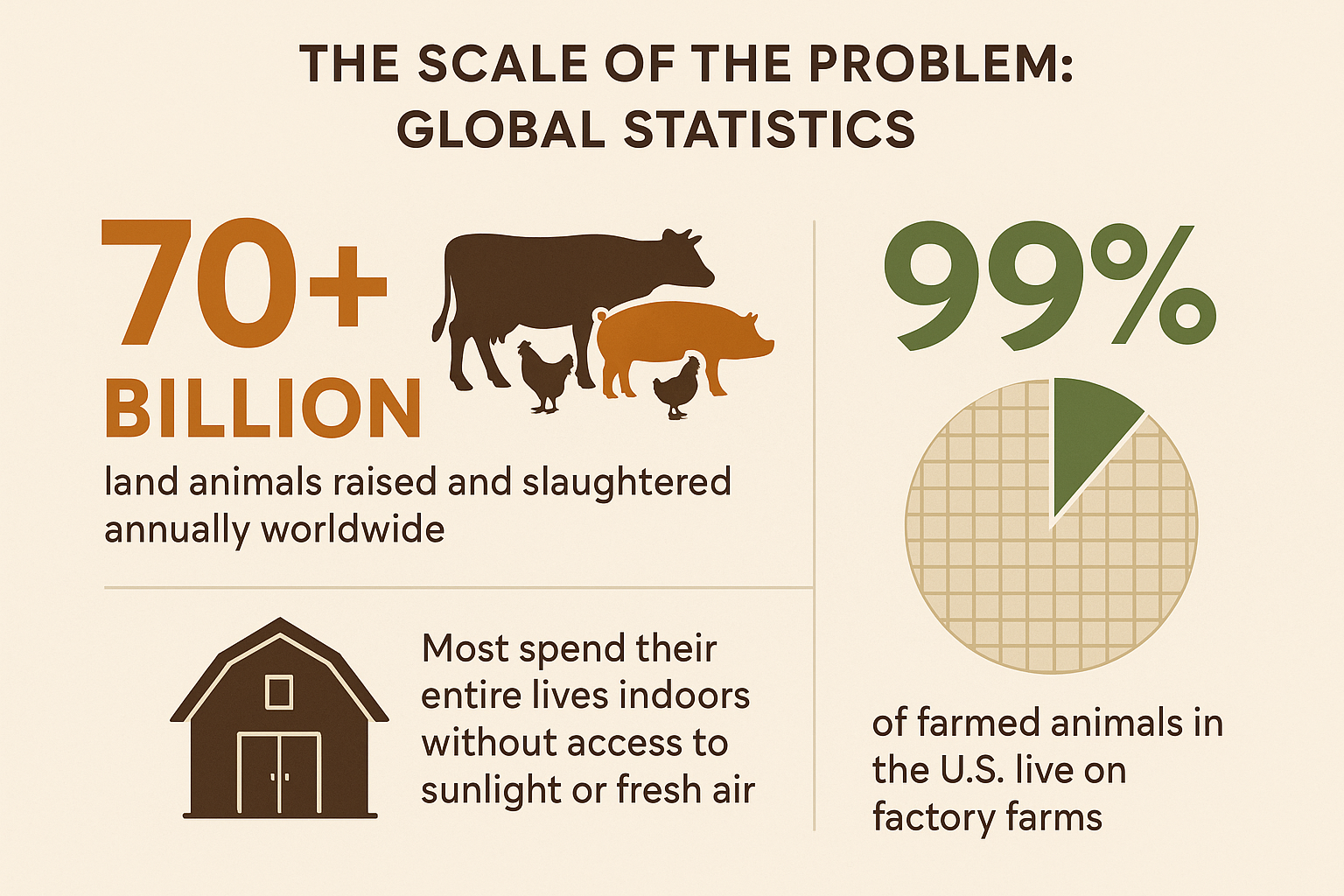
Reference 1: Thornton, P.K. (2010). "Livestock production: recent trends, future prospects." Philosophical Transactions of the Royal Society B, 365(1554), 2853-2867. DOI: 10.1098/rstb.2010.0134
Why This Matters
Scientific research consistently demonstrates that farmed animals are sentient beings capable of experiencing pain, fear, and distress. The practices outlined above cause significant suffering that could be avoided through more humane alternatives.
By choosing plant-based alternatives, you're taking a stand against these cruel practices and supporting a more compassionate food system.
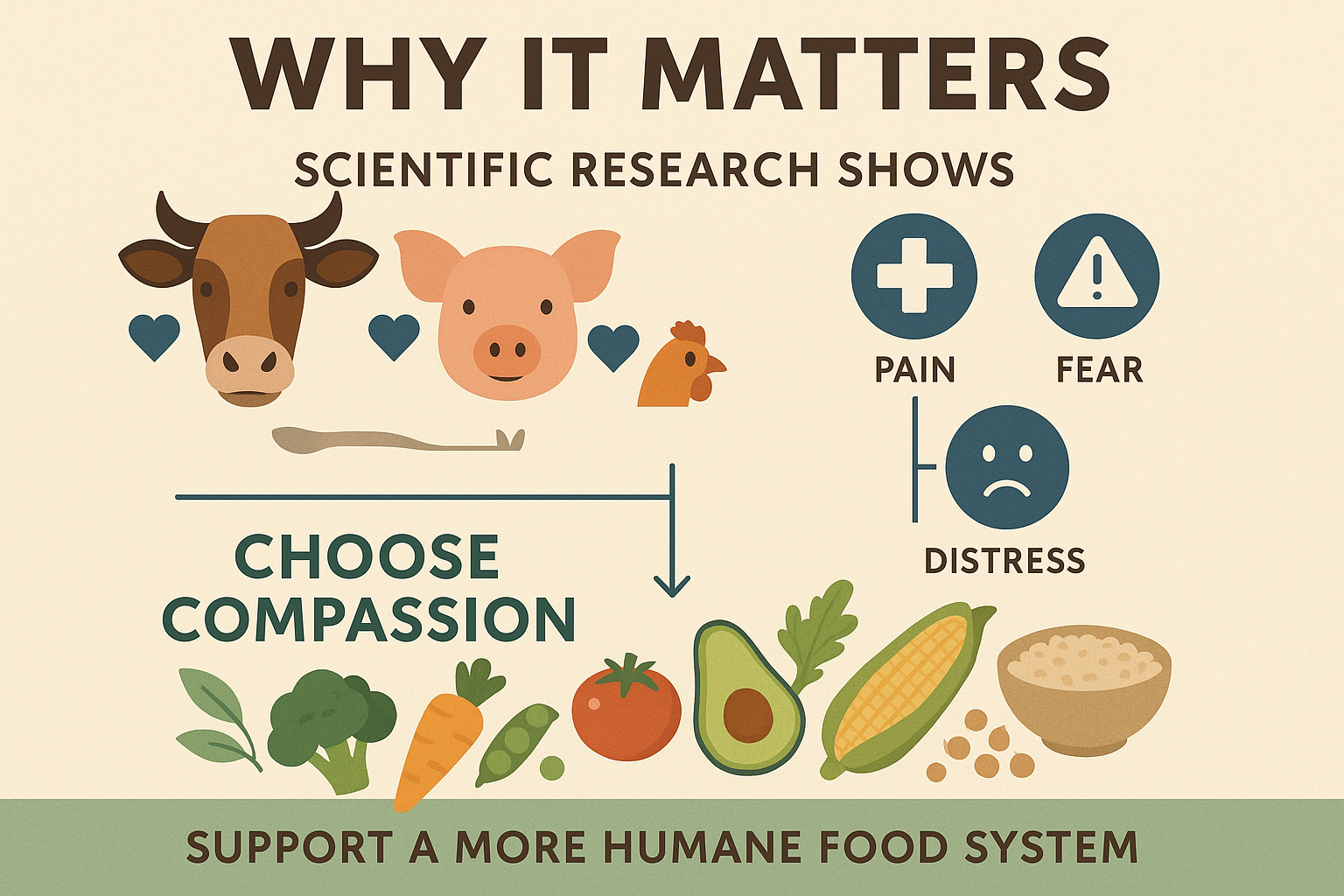
Additional Resources:
- Farm Animal Welfare Council (FAWC) - Independent scientific advisory body
- Compassion in World Farming - Research and reports on factory farming
- The Humane Society of the United States - Farm animal protection resources